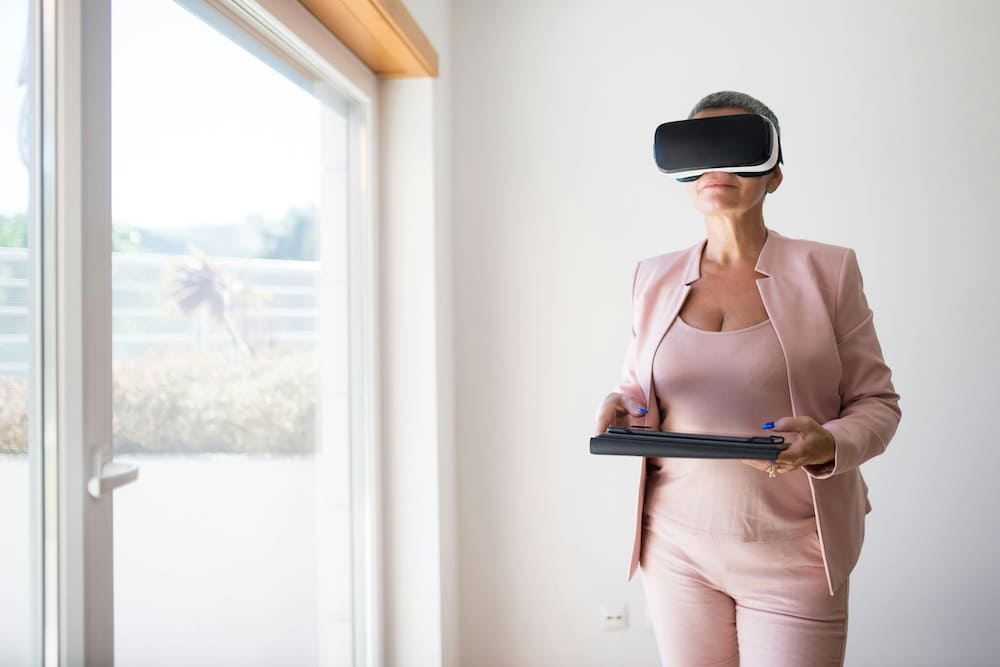Virtual tours have become an essential tool in the real estate industry, allowing potential buyers and renters to explore properties remotely. Here’s a guide on how to get started with virtual tours for real estate listings:
1. Understanding Virtual Tours
Virtual tours provide a 360-degree view of a property, enabling viewers to navigate through different rooms and spaces as if they were physically present. These tours can be simple photo slideshows or more immersive experiences using 3D modeling and VR (Virtual Reality) technology.
2. Benefits of Virtual Tours
- Increased Engagement: Interactive tours keep potential buyers engaged longer.
- Wider Reach: Attracts remote buyers who cannot visit in person.
- Time-Saving: Reduces the need for multiple in-person viewings.
- Better Visualization: Helps buyers visualize the space and layout better than photos alone.
3. Types of Virtual Tours
- 360-Degree Photo Tours: Use panoramic photos to create an interactive tour.
- 3D Virtual Tours: Utilize 3D modeling and rendering for a more immersive experience.
- Video Tours: A video walkthrough of the property.
- Live Virtual Tours: Real-time guided tours using video conferencing tools.
4. Getting Started with Virtual Tours
Step 1: Choose the Right Equipment
- Camera: Invest in a 360-degree camera (e.g., Ricoh Theta, Insta360, GoPro Max) or a DSLR with a fisheye lens for high-quality images.
- Tripod: A sturdy tripod to keep the camera steady and capture clear images.
- Lighting: Proper lighting equipment to ensure well-lit and vibrant images.
Step 2: Select Virtual Tour Software
- Software Options: Choose from various software platforms like Matterport, Zillow 3D Home, Kuula, or CloudPano.
- Features to Consider:
- Ease of use
- Integration with your website and listing platforms
- Customization options
- Hosting and storage options
- Customer support
Step 3: Plan Your Shoot
- Preparation:
- Clean and declutter the property.
- Stage rooms to highlight their best features.
- Ensure proper lighting by using natural light or additional lighting if necessary.
- Shoot Checklist:
- Capture each room from multiple angles.
- Include key areas such as living rooms, kitchens, bathrooms, bedrooms, and outdoor spaces.
- Avoid capturing personal items or clutter.
Step 4: Create the Virtual Tour
- Upload Images: Import your photos or videos into the chosen software.
- Edit and Enhance:
- Use editing tools to enhance image quality.
- Add descriptions, tags, and hotspots for interactive elements.
- Assemble the Tour: Arrange the images or scenes in a logical order to guide viewers through the property naturally.
Step 5: Publish and Share
- Embed on Website: Integrate the virtual tour into your real estate website.
- Listing Platforms: Share the tour on real estate listing sites like RealEstate.Earth, Zillow, Realtor.com, and local MLS.
- Social Media: Promote the tour on social media platforms to reach a broader audience.
- Email Campaigns: Include virtual tour links in email newsletters to potential buyers.
5. Best Practices for Virtual Tours
- High-Quality Images: Ensure images are high resolution and well-lit.
- User-Friendly Navigation: Make navigation intuitive with clear instructions.
- Regular Updates: Keep the tour updated to reflect any changes or improvements to the property.
- Mobile Compatibility: Ensure the tour is accessible on mobile devices.
- Privacy Considerations: Avoid including personal or sensitive information in the tour.
6. Advanced Tips
- Incorporate VR: For a more immersive experience, create VR-compatible tours that can be viewed with VR headsets.
- Interactive Floor Plans: Integrate interactive floor plans that allow users to click on different rooms to view them.
- Analytics: Use analytics tools to track user engagement and gather insights on how viewers interact with the tour.
Conclusion
Creating virtual tours for real estate listings is a powerful way to attract and engage potential buyers. By investing in the right equipment, choosing suitable software, and following best practices, you can create compelling virtual tours that showcase your properties effectively and reach a broader audience. Embracing this technology not only enhances the buyer experience but also sets you apart in the competitive real estate market.
